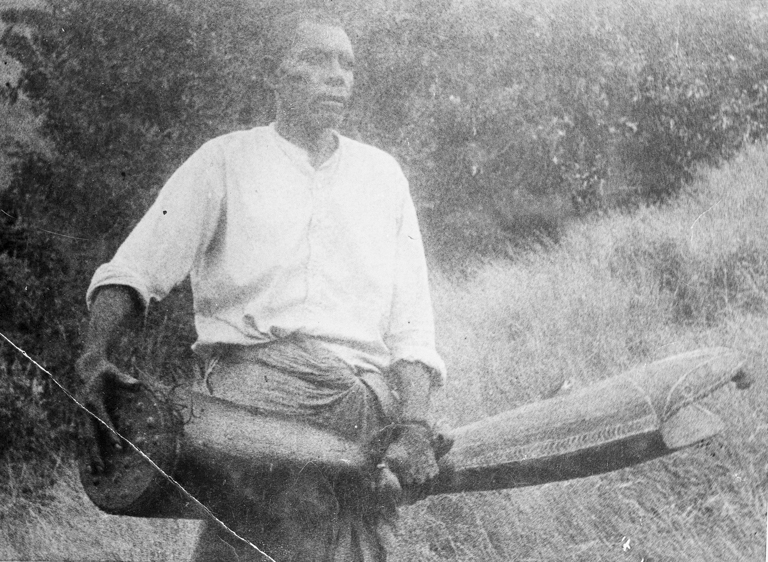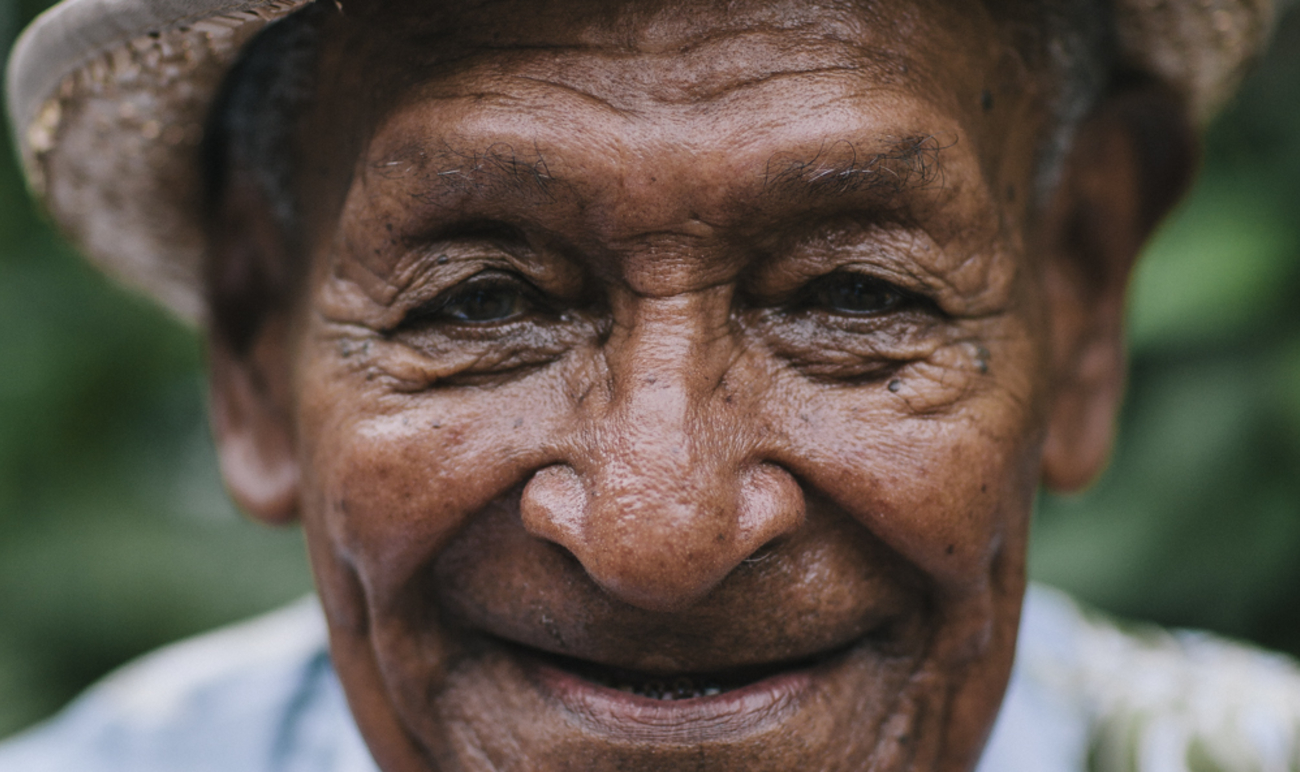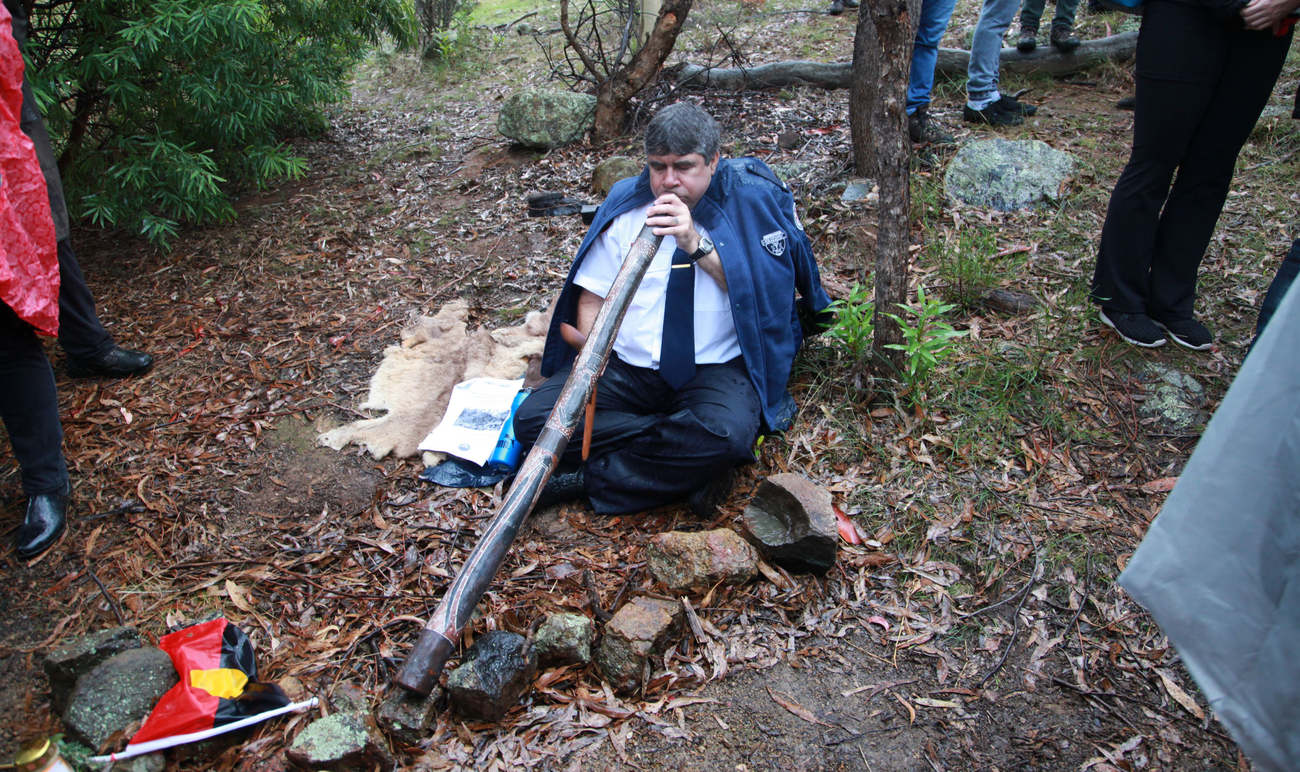You are listening to the echo of the drums, connecting you across the bridge in time… This is warupa uu “the echo of the drums…”
(Ephraim Bani in Gab Titui Cultural Centre 2011)
The drum has been used in sacred and secular music performances for thousands of years by Torres Strait Islanders and is a quintessential symbol of Torres Strait Islander identity.
A number of photographs and sound recordings from the MacFarlane and Lawrence Collections held at AIATSIS show the cultural endurance of the drum and its incorporation into sacred Christian song traditions in the Torres Straits.
The Macfarlane Collection comprises of over 1000 photographs taken by the Rev. William H. MacFarlane whilst working as a missionary on Erub / Darnley Island during 1917-1933. This collection is one of a number by the Rev Macfarlane held at AIATSIS that collectively represent our most significant materials on the Torres Strait Islands. The collection comprises hand-written manuscripts, photographs, journals and notebooks documenting ceremonial and everyday life from the early twentieth century.
The following photograph from the Macfarlane Collection records the survival of one of the Zogo Wasikor (sacred drums) of Mer/Murray Island. This drum is one of the most spiritual cultural objects belonging to the Law of Malo (pre-Christian sacred belief). When missionaries from the London Missionary Society (LMS) arrived on 1 July 1871 they brought with them a Congregationalist (conservative Protestant) form of Christianity and “set about erasing all memories of the past” by banning songs, dances and ordering the destruction of cultural objects including the Malo mask and Nemau wasikor (sacred drum) on Mer (Mabo, 2005). However, the Zogo Wasikor drum held by Joseph Lui in this 1922 photograph is still in existence with custodial rights over it currently held by the Noah Family (in Mer) on behalf of the Zagareb clan.
The LMS left the Torres Straits in 1915 and was replaced by the Anglican Christian denomination who supported the introduction of the drum into their church services in 1921. The moment that this occurred (1 July 1871) is shown in the photograph below. The photograph was taken on the first celebration of the ‘Coming of the Light Festival’, an event that commemorated the 50th anniversary of the arrival of the first LMS missionaries. This event continues to be celebrated as one of the most important on the Torres Strait Islander cultural calendar. The photograph reveals that both the warup (open ended drum, ) and the buruburu/boroboro (waisted tubular drum) were used on this occasion.

Portrait of Marau (centre), lay-reader (rear), and churchwarden, with ceremonial drums, introduced into church services in 1921, MacFarlane Collection, 1921
Portrait of Marau (centre), lay-reader (rear), and churchwarden, with ceremonial drums, introduced into church services in 1921, MacFarlane Collection, 1921
Over time, the introduced Anglican sacred hymns became indigenised not only through the translation of verses into local languages, Meriam Mer (spoken in the eastern islands) and Kala Lagaw Ya (spoken in the western islands), but also via their drum accompaniments. Examples of these hymns and the use of the drums in contemporary contexts are contained in the Lawrence Collection. This Collection of 67 photographs and 600 hours of sound recordings were collected by musicologist Helen Lawrence during the ‘Coming of the Light’ and other community celebrations in the years 1995-1997 as part of an AIATSIS Research Grants funded project. It's culturally and historically significant for documenting contemporary sacred musical repertoires and religious practices in the Torres Straits.
The following photograph and sound recording from the Lawrence Collection show the enduring use of the drum in sacred Christian music contexts. Here the boroboro drum is played by Nancy Anson, who is also the lead singer in the sound file. The hymn is sung in Meriam Mer. The recordings were made during celebrations for the 'Coming of the Light Festival' in 1995 at the All Saints Church in Erub.
Acknowledgements: I wish to acknowledge my colleague John Morseu and the Torres Strait Islander Regional Council especially John Armitage and Kay Noah for their help in making this blog possible.
More About This Item:
Related Items:
Gab Titui Cultural Centre 2011, ‘Adhi Ephraim Bani : Muruygawmal Muykupal Pathamukmik: a commemorative booklet’, Gab Titui Cultural Centre, Thursday Island
Lawrence, H 2004, ‘The Great traffic in tunes: agents of religious and musical change in eastern Torres Strait’ in R Davis (ed), Woven Histories Dancing Lives: Torres Strait Islander Identity, Culture and History, Aboriginal Studies Press, Canberra, pp 46-72
Mabo, E 2005 ‘Music in the Torres Straits’ in F Magowan & K Neuenfeldt (eds), Landscapes of Indigenous Performance, Aboriginal Studies Press, Canberra
Resources:
Screen Australia Digital Learning 2018, ‘Sacred Order’



